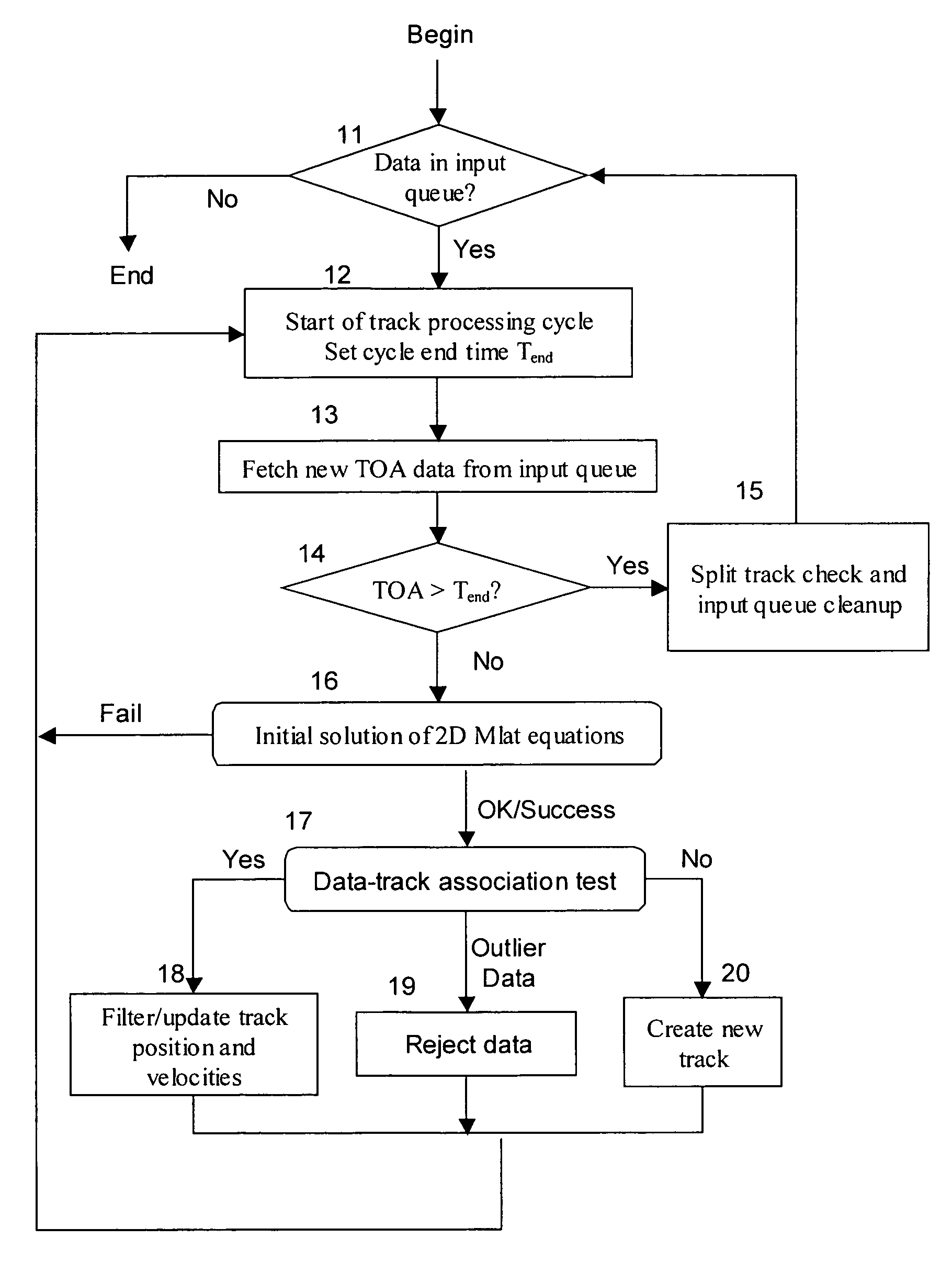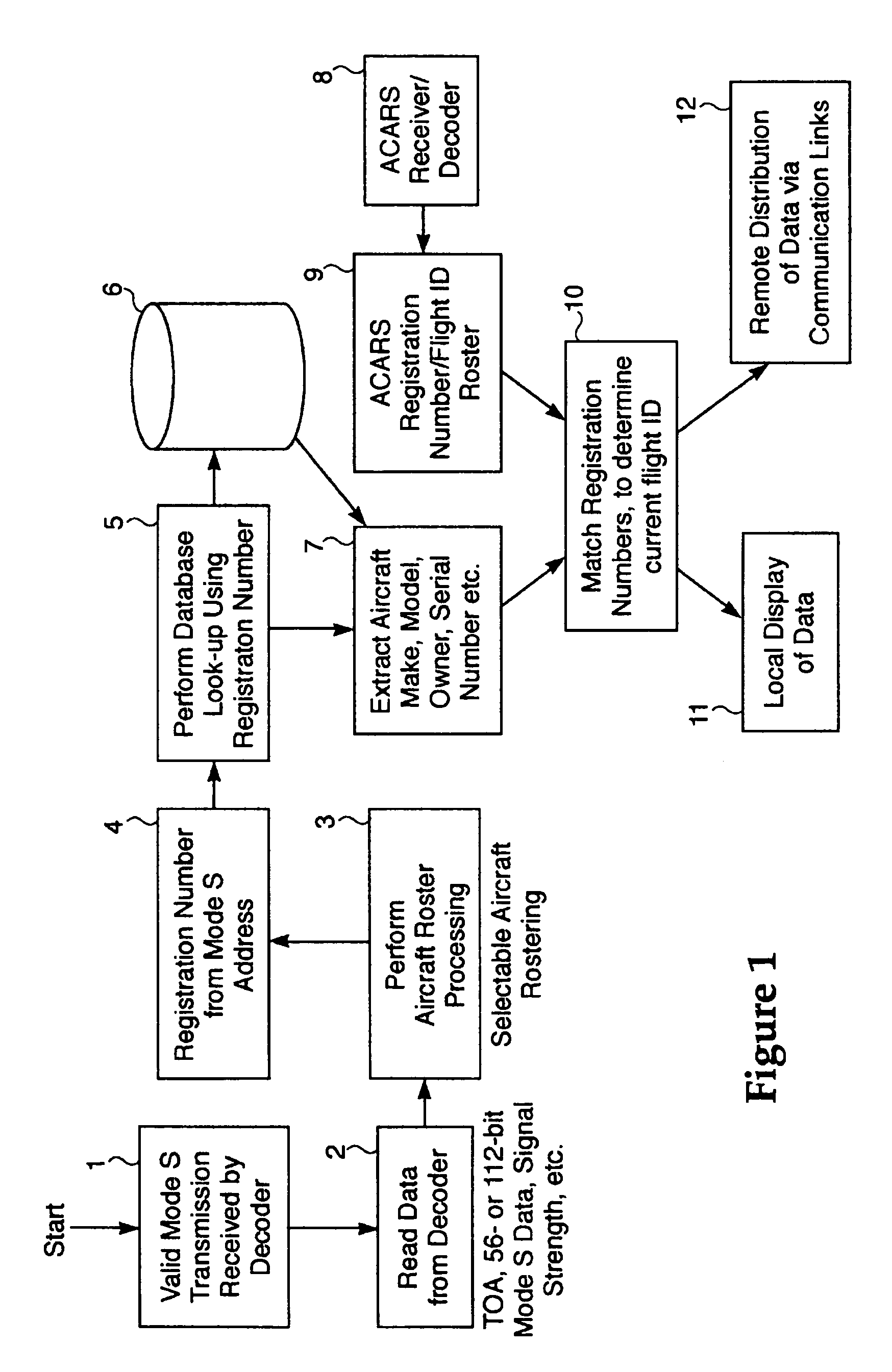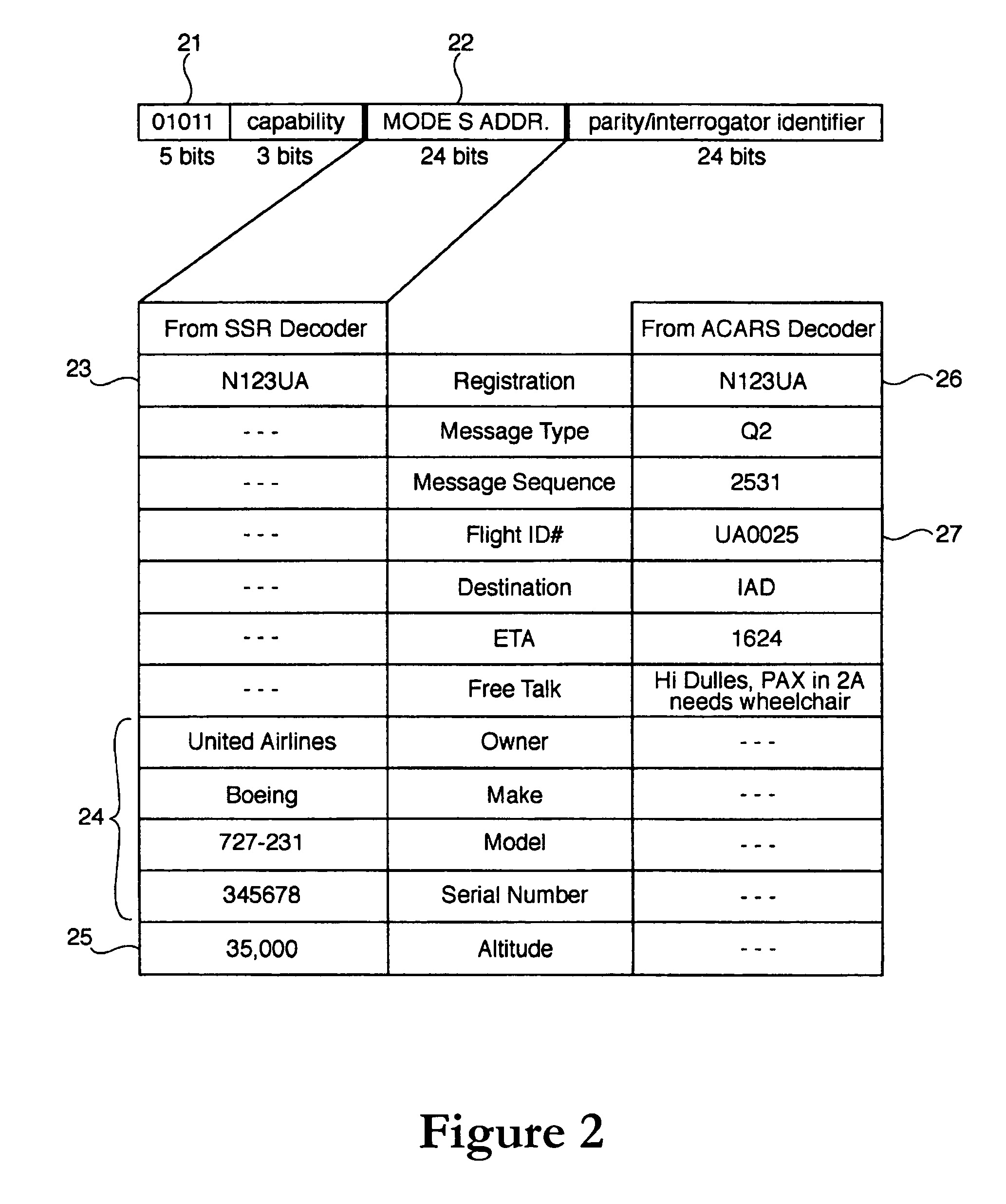Method and apparatus for accurate aircraft and vehicle tracking
a vehicle and aircraft tracking technology, applied in direction finders using radio waves, instruments, reradiation, etc., can solve the problems of inability to use a completely passive approach for triangulation and multilateration, relative high bandwidth link still required using this approach, etc., to improve the vertical accuracy significantly, improve the hdop, and improve the effect of vertical accuracy
- Summary
- Abstract
- Description
- Claims
- Application Information
AI Technical Summary
Benefits of technology
Problems solved by technology
Method used
Image
Examples
first embodiment
[0154]It is readily apparent that the target tracking system described generally in FIG. 5 is unique in that the statistical property of TOA is directly incorporated into the filtering equation, thus generally resulting in better accuracy. This approach is in contrast with radar-centric target tracking systems, which may employ data fusion of radar data and unfiltered multilateration equation solutions as inputs. One problem with radar-centric data fusion is that the inherent statistical properties of primary radar measurement differ very much from those of multilateration equation solutions.
second embodiment
[0155]In the present invention, as described above in connection with FIG. 16, a technique is provided for tracking targets with varying receiver combinations. In a multilateration target tracking system, not all sensors are able to supply a TOA value for every single reply message of any target. Because of geographical placement of sensors and the statistic nature of TOA measurement noise, these diverse sets of sensor TOA combinations yield raw multilateration equation solutions which may spread all over the place, even from one message to the next.
[0156]In this second embodiment, of the present invention, a program memory is set up to record the sensor combination used in the previous track update process. A set of rules has been developed to determine the optimal sensor combination for the measurement equation in the extended Kalman Filter model. The first choice is to go with the same sensor combination as the previous measurement. Doing so improves track accuracy and smoothness...
third embodiment
[0163]Past messages may then be retrieved and be compared side-by-side with new target messages for matches. This third embodiment of the present invention enhances track update rates for the following scenarios:[0164](1) Associating Mode A and / or Mode C messages with a Mode S target track in order to supplement Mode S data in the track update stream; and[0165](2) Correlate Mode A and Mode C messages of an ATCRBS-only target and combine them for track updates.
[0166]There are several innovative features of this third embodiment of the present invention. In a first variation of the third embodiment of the present invention the system may combine signal strength matching with raw multilateration position matching among ATCRBS and Mode S messages. Raw signal strength at the RF front-end unit of each remote sensor is recorded and all the quantized signal strength values may be transmitted to the central server. As in radar tracking systems, the basic correlating / matching of Mode A, Mode ...
PUM
 Login to View More
Login to View More Abstract
Description
Claims
Application Information
 Login to View More
Login to View More - R&D
- Intellectual Property
- Life Sciences
- Materials
- Tech Scout
- Unparalleled Data Quality
- Higher Quality Content
- 60% Fewer Hallucinations
Browse by: Latest US Patents, China's latest patents, Technical Efficacy Thesaurus, Application Domain, Technology Topic, Popular Technical Reports.
© 2025 PatSnap. All rights reserved.Legal|Privacy policy|Modern Slavery Act Transparency Statement|Sitemap|About US| Contact US: help@patsnap.com



